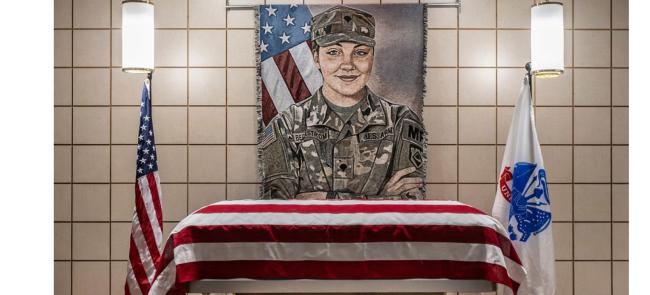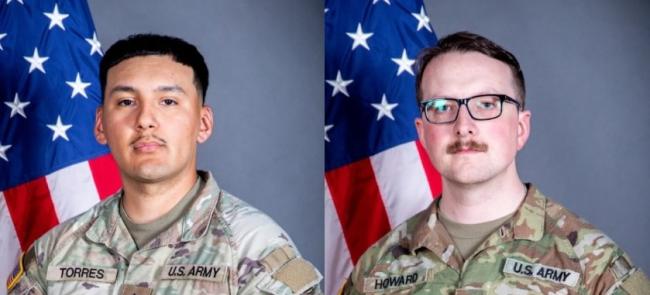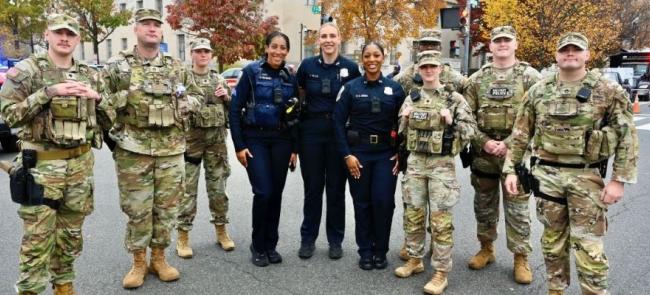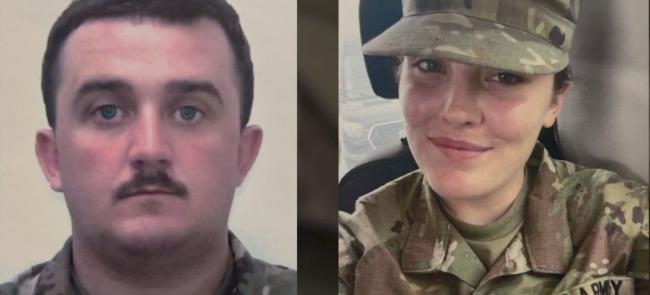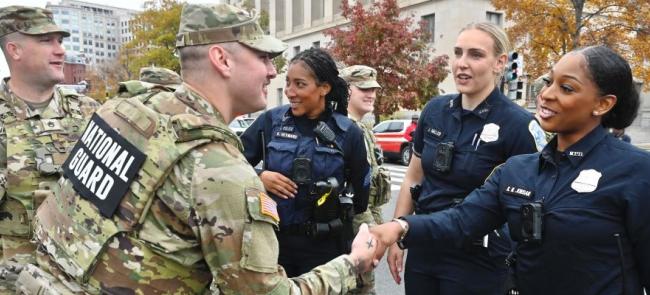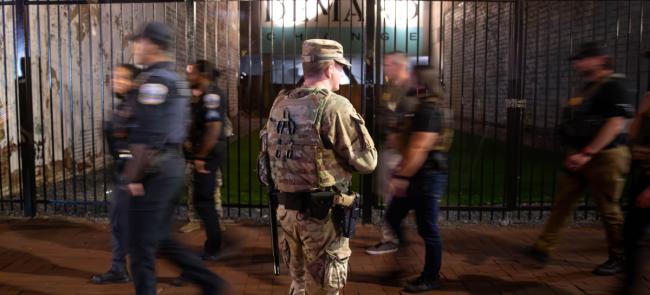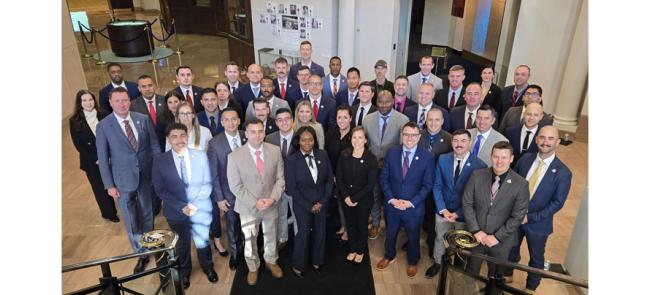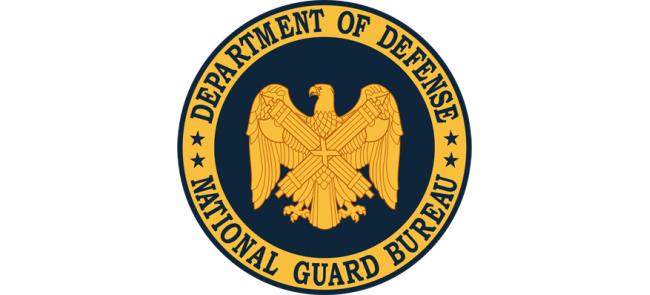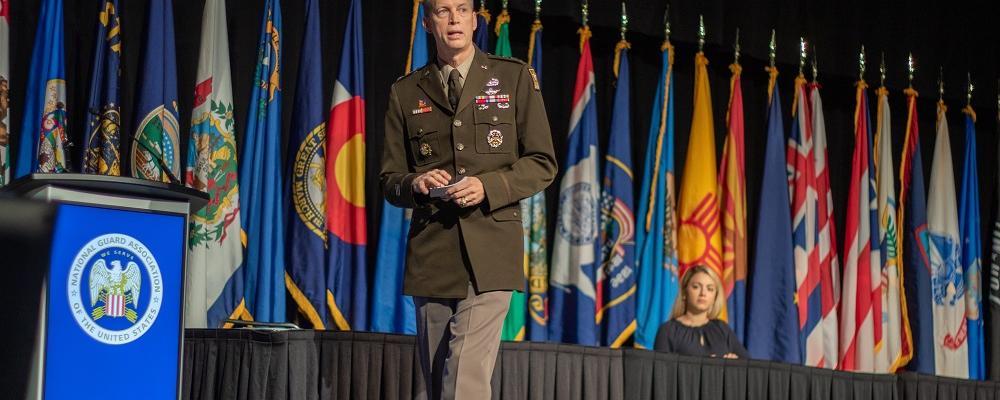
As the Army prepares for its future, there are new opportunities for the National Guard, Lt. Gen. Daniel R. Hokanson told leaders on the final day of the 141st General Conference & Exhibition.
Hokanson also warned that steps must be taken to relieve some of the stress current and future missions may lay on Guardsmen, their employers and families.
The general, who became Army Guard director in June, told those in attendance that change is needed to ensure the Guard remains a relevant and lethal force.
Guardsmen are receiving the most dynamic and realistic training possible through four combat training rotations each year, Hokanson said. But the high training demands placed on some units — namely armor and Stryker brigades — are creating their own challenges.
“I’ve met with the units, I’ve talked to some of the adjutants general and I’ll tell you it’s a significant demand to go to an [Exportable Combat Training Capability exercise], a [National Training Center] rotation and hopefully a deployment after that,” he said. “When you’re doing 68 to 100 days in an XCTC year then have an NTC year — that puts a significant amount of stress on your life. We have to do whatever we can to reduce that stress level.”
Some units are on a 1:4 deployment-dwell model, Hokanson said. But the goal is to improve that rate to 1:5.
“When we look at our business model, we’re not the active duty,” he said. The Guard does a lot, but one of its benefits is that the nation does not pay for majority of the force full-time.
“We have to manage our time at every level,” Hokanson said. “We need to balance that so we can meet our requirements but not break our force.”
To relieve some of that stress, the general said leaders were focused on streamlining some training requirements not related to combat missions. And he asked leaders at all levels to identify requirements that could be trimmed.
“Help me help you,” he said.
The Army Guard is also working with Army leaders to ensure the Guard is properly resourced based on its readiness requirements, Hokanson said. That means pushing for more full-time support, including maintainers for ground combat vehicles and aircraft.
With some states facing recruiting challenges, the general said he preferred not shifting forces between states. Instead, he said resources are better served in working to help states fill their units, while looking at creating new formations that could better fit into future requirements.
“What I look at right now is what the Army wants to be in the future,” he said. “We’re trying to focus on identifying where the Army growth opportunity is.”
The Army Guard currently has approximately 335,500 soldiers. But Hokanson said he’d like to see new capabilities expand the force structure to 350,000 or more.
To do that, the Guard would need to address some of its recruiting and retention challenges. Hokanson urged leaders to be more involved in their soldiers’ lives and help educate their families on available benefits. He said Guard leaders would work hard to ensure those benefits are received in a timely manner. Meanwhile, leaders at lower levels should make allowances to allow soldiers to manage their civilian workloads or not miss key family events.
Another opportunity for the Guard may come in how units are organized.
Hokanson noted that 18 National Guard divisions fought in World War II. But today, the eight Guard divisions exist as headquarters only, without the bulk of the formation that would be needed to deploy against a near-peer.
“For the past 18 years, our unit of action has been primarily the brigade. But in large-scale ground operations, it’s now the division,” he said. “And in the future, Guard divisions — not just headquarters — may return to the Army’s combat formations.”
The Guard already has the downtrace units, with the exception of civil affairs and psychological operations, to fill in its eight divisions, the general said. Doing so would help close one of the Army’s top capability gaps — a lack of echelons above brigades optimized for large-scale ground operations.
It would also create new training and development opportunities and improve the pool of candidates competing for positions as division commanders and assistant commanders.
“When I look across our formations, the thing I would propose to you is establishing, or really re-establishing, divisional alignment or associations,” Hokanson said.
Doing so would expand the number of full Army divisions from 10 — all of which are in the active duty — to 18. It could also lead to the establishment of two, or possibly three, additional corps.
“That’s way down the road, but it’s one of those things we look at as a potential possibility,” Hokanson said.
“What I don’t want to do is tell the adjutants general or division commanders how to do this,” he added. “But what I want to do is start the conversation about aligning our brigade combat teams, our maneuver enhancement brigades, our combat aviation brigades and all downtrace units with those divisions.”
One thing that Hokanson believes shouldn’t change is the current makeup of the Guard in relation to the Army Reserve.
After being asked about Reserve units creeping into the Guard’s combat reserve mission, Hokanson said he believes Army leaders were clear when they differentiated between the two reserve components in the 1993 Offsite Agreement.
That agreement called for the Guard to be the primary combat reserve and for the Army Reserve to provide support and combat service support capabilities.
“I would really like to make sure we follow that,” Hokanson said. “It’s absolutely critical that we keep our combat formations in the National Guard and that we don’t compete with the Army Reserve.”
Hokanson sat down with NATIONAL GUARD magazine ahead of the conference. The interview is available in September's issue here.

